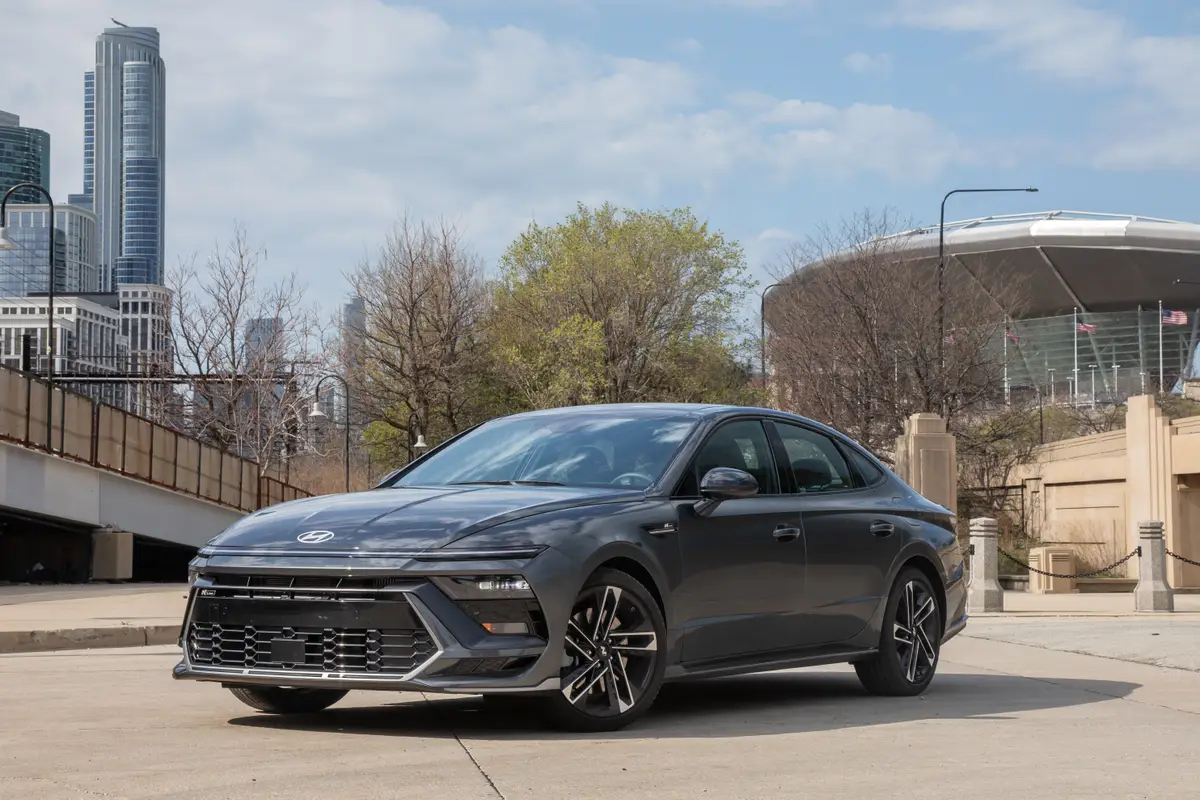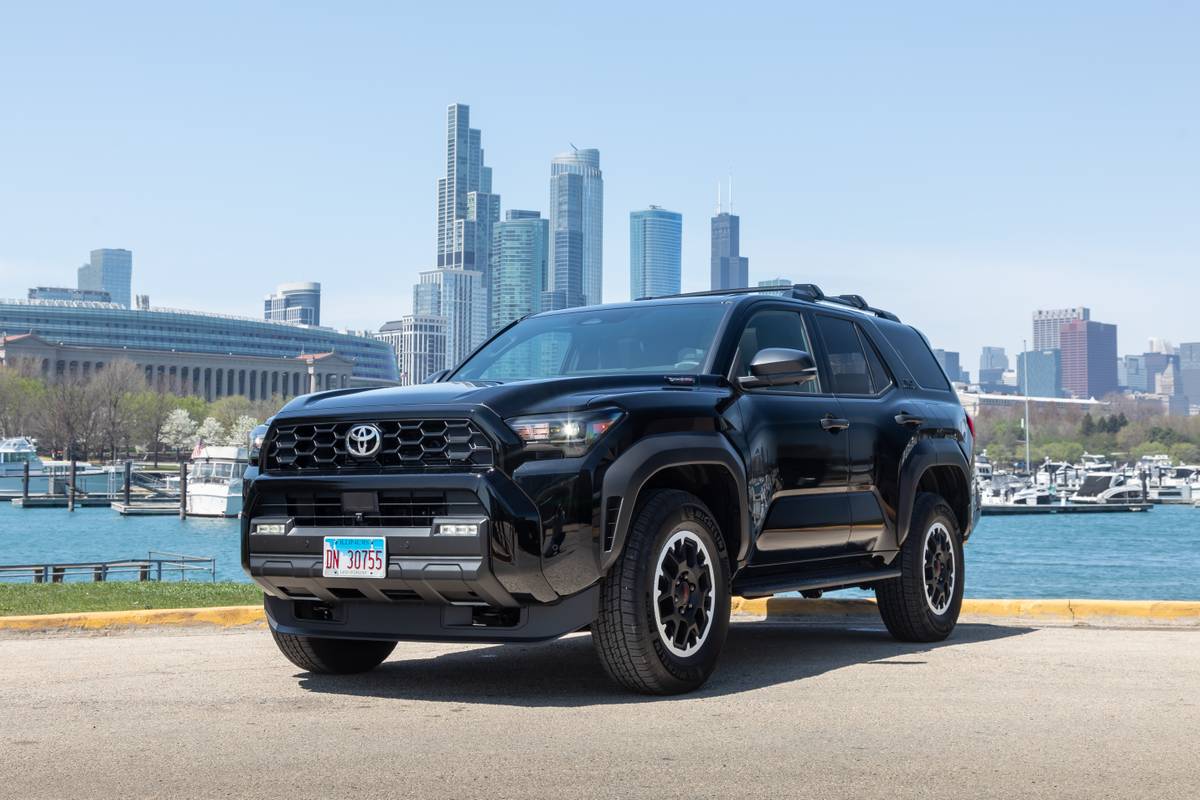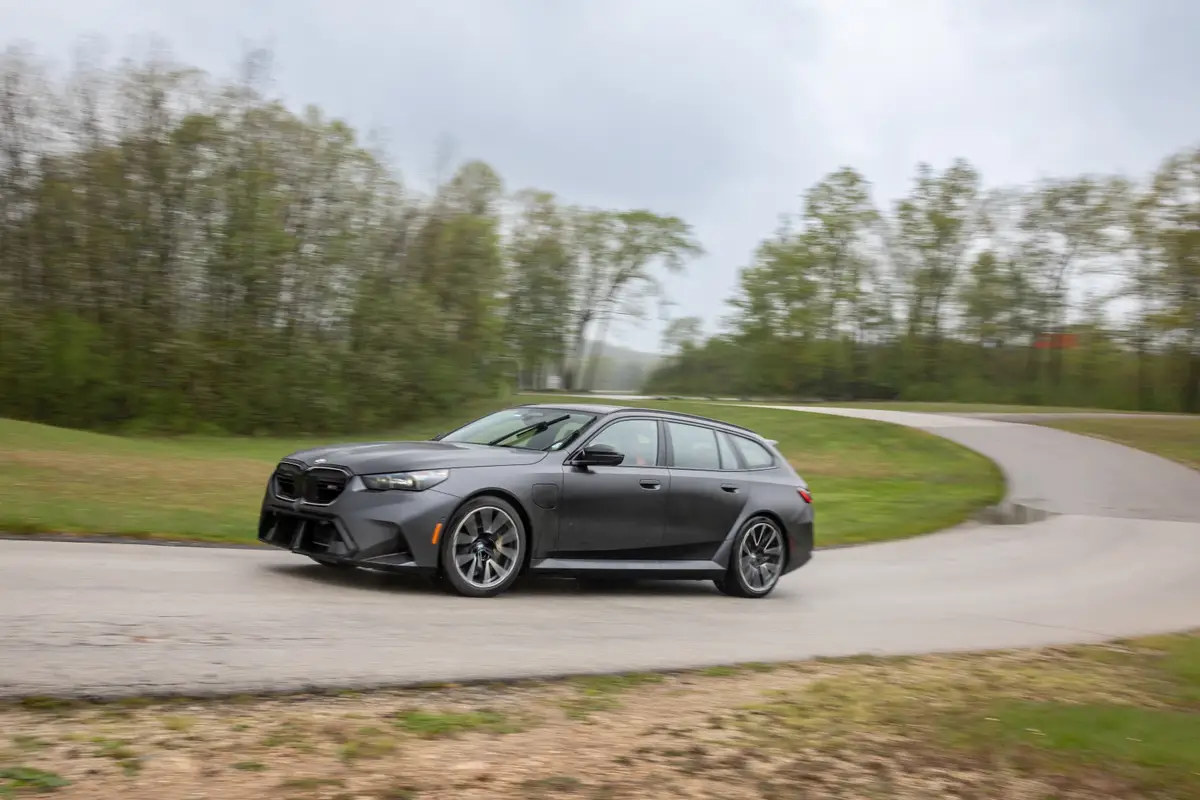2002 Mitsubishi Galant: What's New
Vehicle Overview
Exterior and interior revisions for 2002 give Mitsubishis Illinois-built high-volume sedan a fresh appearance, led by a new grille and a lower intake lamp design. New aero bumpers and fresh taillights have been installed. Six models are offered; one is the new LS sedan, which comes with a four-cylinder engine, sunroof and Mitsubishi/Infinity sound system. New six-spoke, 16-inch alloy wheels go on the GTZ and LS V6 models. Bigger front disc brakes are used on four-cylinder Galants.
First seen in its present form at the Chicago Auto Show in February 2001, the Galant is built at the same plant as the Eclipse coupe and Spyder convertible, and the Chrysler Sebring and Dodge Stratus coupes. Mitsubishi and Chrysler have a 30-year history of sharing vehicles and components. DaimlerChrysler holds a controlling interest in Mitsubishi.
Exterior
Mitsubishis Galant can be considered either a long compact or a short midsize sedan. Based on its passenger volume of 97.6 cubic feet, the Environmental Protection Agency classifies it as a midsize, but it ranks as a compact according to cars.com criteria because of its 103.7-inch wheelbase, which is shorter than that of the compact Chevrolet Cavalier. The Galant measures 187.8 inches long overall and stands 55.7 inches high.
Contemporary styling is marked by chiseled fenders and sweeping rear roof pillars, which helps give the Galant the appearance of a larger automobile. Intakes in the lower bumper wrap around the bodysides, and openings house projector-beam fog lamps. Like all Mitsubishi products, the Galant displays a new triple-diamond chrome badge for 2002. The Galant comes in a variety of trims: DE, ES, ES V6, LS, LS V6 and GTZ. Tires are 15 inches in diameter on four-cylinder models and 16-inches on those with the V-6 engine.
Interior
Five occupants fit inside the Galant with some degree of comfort, though the rear seat gets crowded when three people try to squeeze in. The trunk has 14.6 cubic feet of cargo volume, and the split rear seatback folds for extra space on all models except the base DE sedan. A CD player is standard on all models. The LS and GTX have an Infinity premium audio system, and new carbon fiber-look interior panels decorate the GTZ edition for 2002.
Under the Hood
The DE and ES sedans come with a 140-horsepower, 2.4-liter four-cylinder engine. A 3.0-liter V-6 rated at 195 hp is standard in the LS and GTZ and optional in the ES. Both engines work with a four-speed-automatic transmission, which incorporates adaptive shift control. The V-6 requires premium fuel.
Safety
Antilock brakes are optional on the ES sedan. An all-weather option package for the ES V6 and LS V6 includes traction control and heated outside mirrors.
Driving Impressions
Mitsubishis midlevel sedan is surprisingly pleasant and capable. It is particularly easy to drive and judge and promises excellent visibility all around. The Galant has been a very good car in the past, but its current form moves it up to excellent.
A smooth ride is a big part of its appeal. Its not completely gentle but is impressively close, without impairing handling to any noticeable degree. The sedan reacts to the bulk of bumps but not enough to disrupt passengers. Steering with a light touch, the Galant suffers no shortage of control.
Equally enticing are the energetic V-6 engine and easy-shifting automatic transmission. Engine sounds are barely discernible, even during acceleration. The V-6 engine requires premium fuel, while the four-cylinder gets by on regular gas.
Despite being categorized as a compact due to its relatively short wheelbase, the Galant offers midsize-level room in both the front and rear. The backseat is spacious and comfortable for three. All seats are amply cushioned with excellent thigh support, but back support could be better. Storage space includes an immense glove box and an ample, easy-to-load trunk. Controls and conveniences are well organized with simple, legible gauges.
| Reported by Jim Flammang for cars.com From the cars.com 2002 Buying Guide |
Featured stories

2025 Hyundai Sonata N Line Review: Banish Boring




